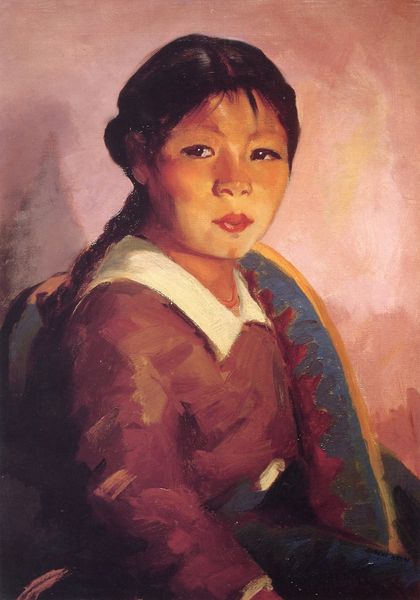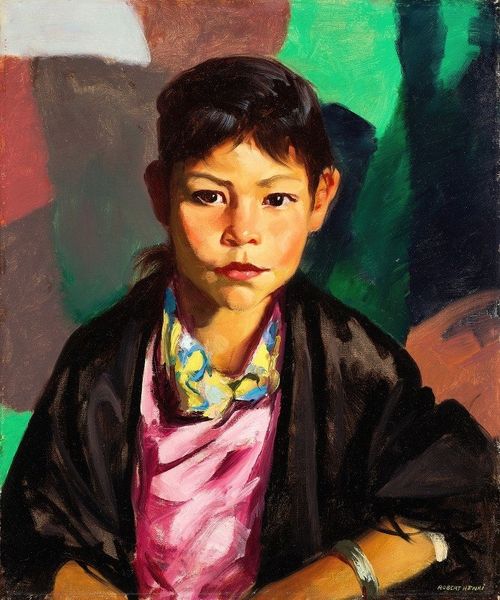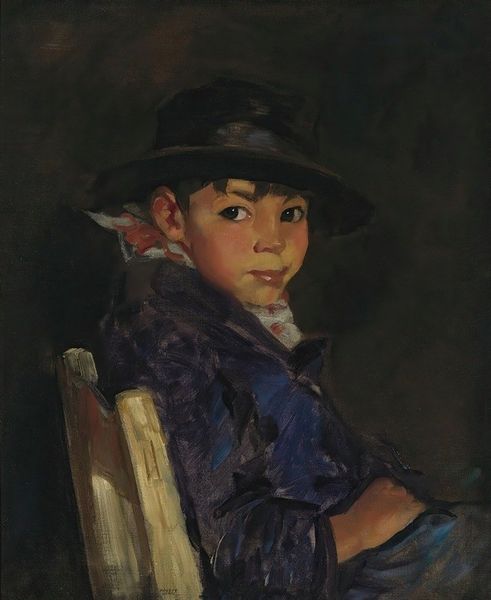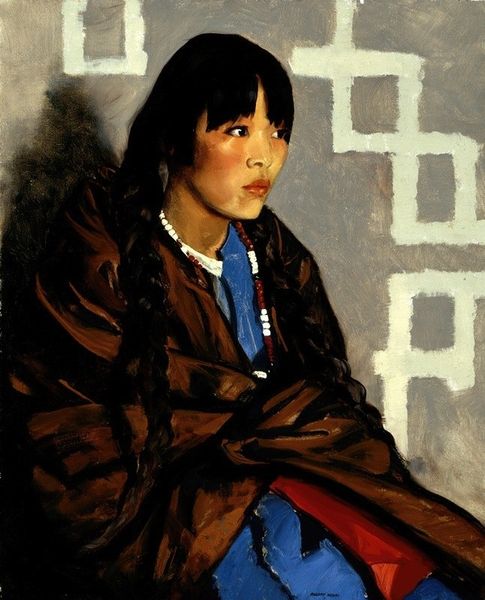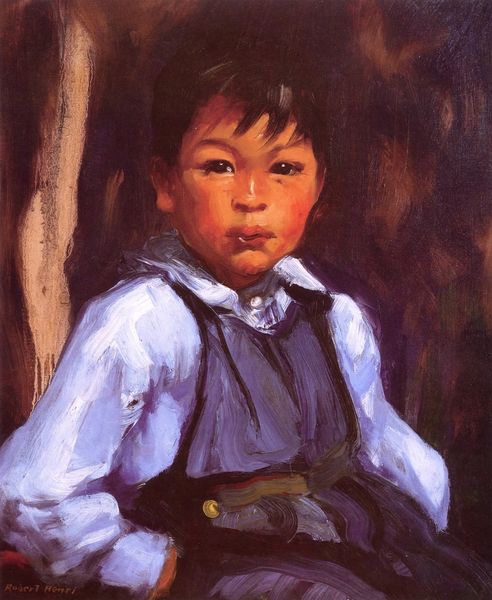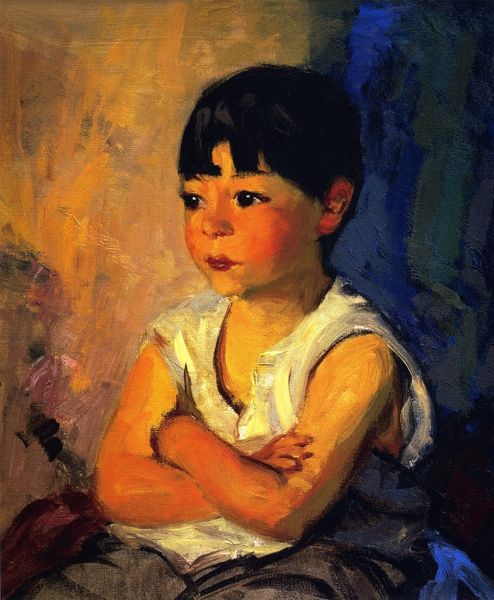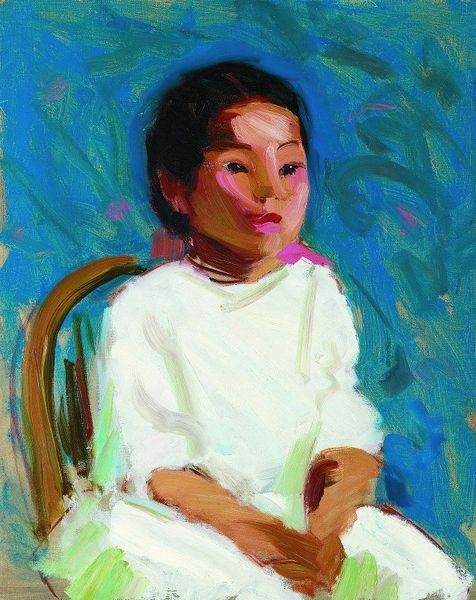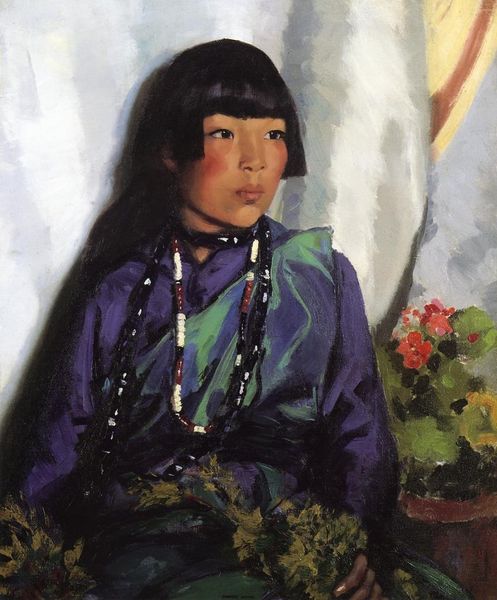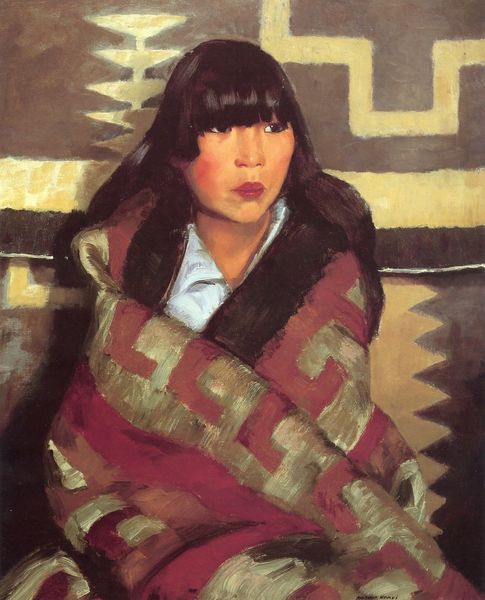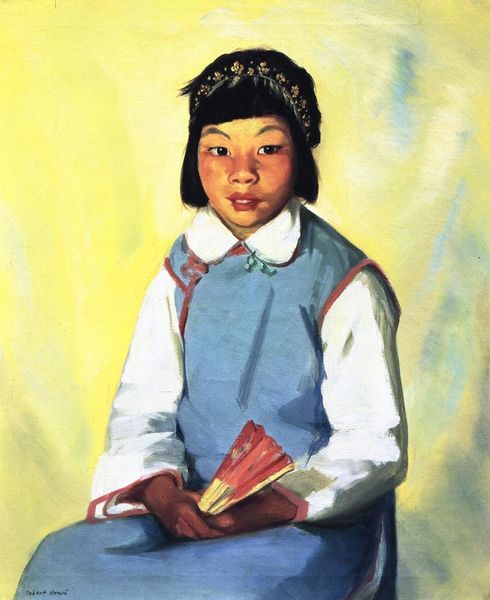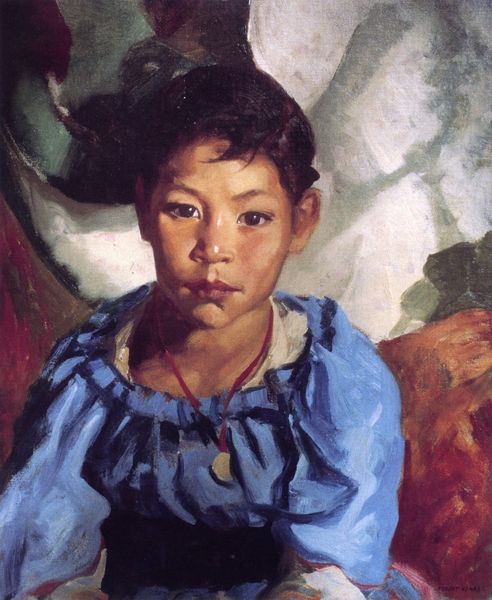
painting, oil-paint, impasto
#
portrait
#
portrait
#
painting
#
oil-paint
#
impasto
#
ashcan-school
#
realism
Copyright: Public domain
Robert Henri’s oil on canvas, “Julianita”, captures a young woman, likely painted in the early 20th century. Henri was a key figure in the Ashcan School, and, like his contemporaries, he sought to depict the realities of everyday life, especially those of the working class. This portrait of Julianita, however, presents a slightly different perspective. Henri often painted portraits of children from various ethnic backgrounds encountered during his travels. The painting could be interpreted within the context of early 20th-century American art and its complex relationship with immigration and cultural diversity. It reflects a growing interest in portraying the nation’s changing demographics, yet also raises questions about representation and the gaze of the artist. To fully understand this work, we can look at Henri’s biography, the social dynamics of the time, and critical writings on the Ashcan School. We should consider how the art world was changing and what role it played in shaping perceptions of different communities in America. The meaning of art is always contingent on its social and institutional context.
Comments
No comments
Be the first to comment and join the conversation on the ultimate creative platform.
